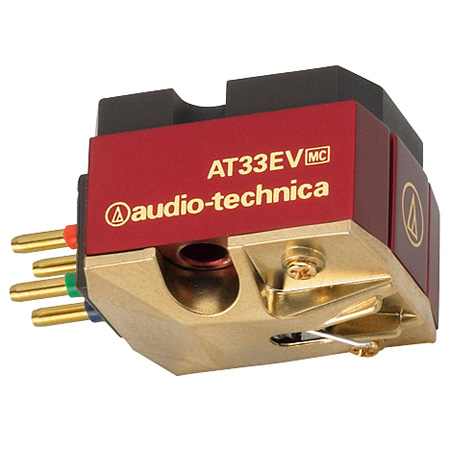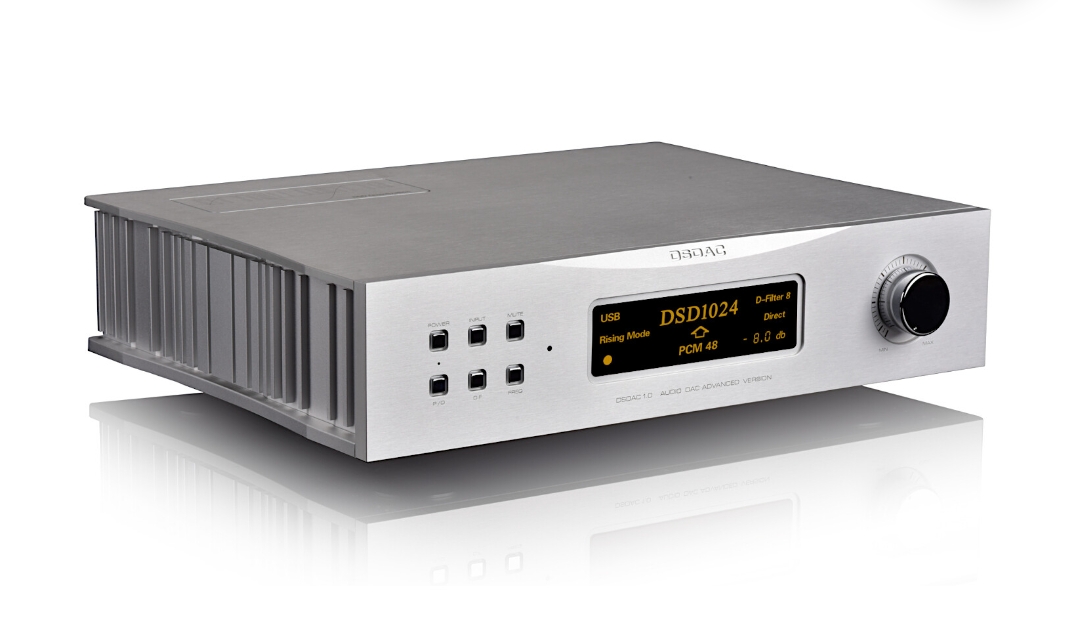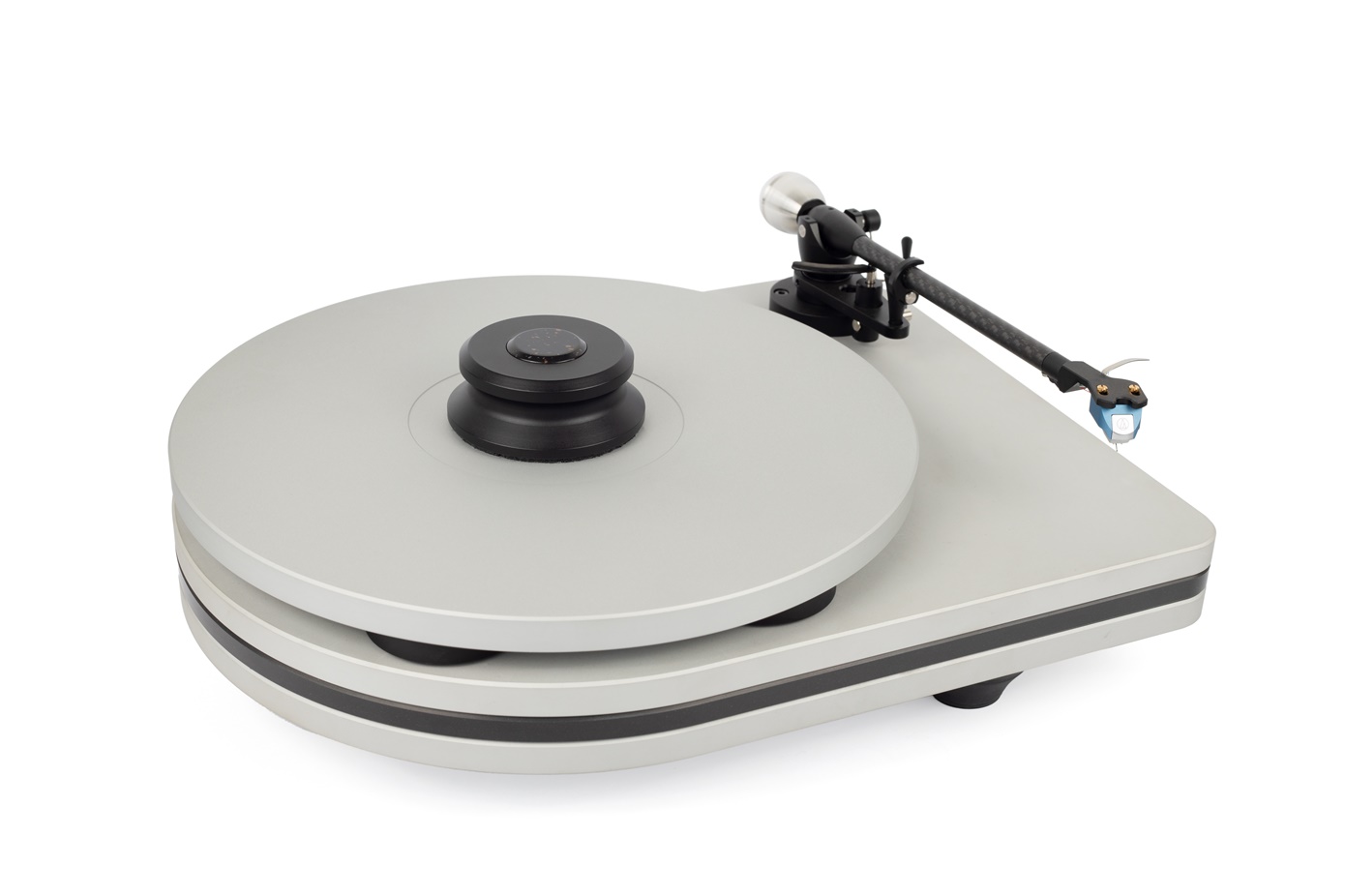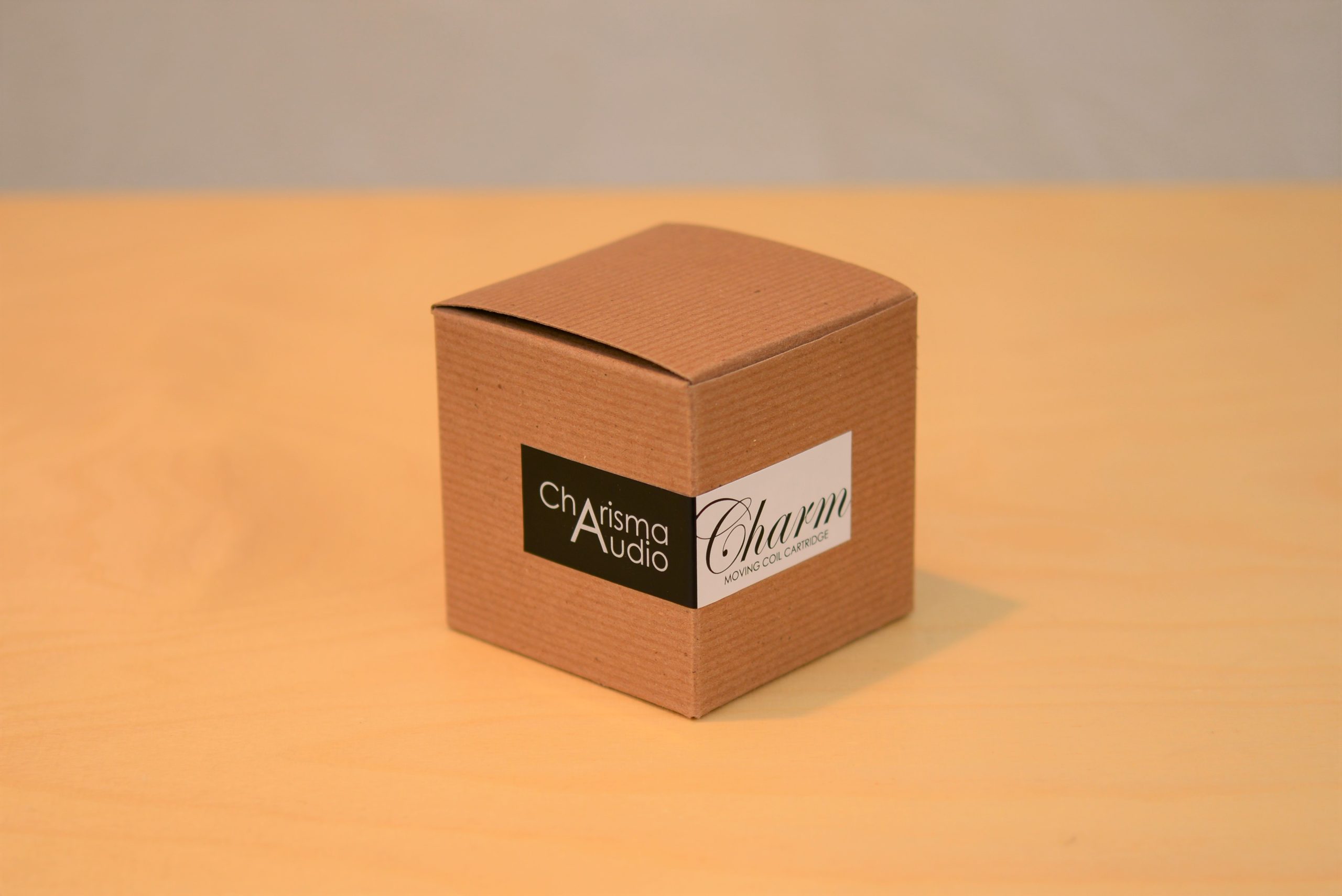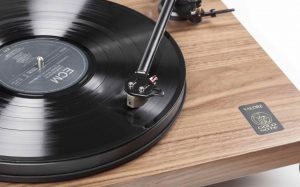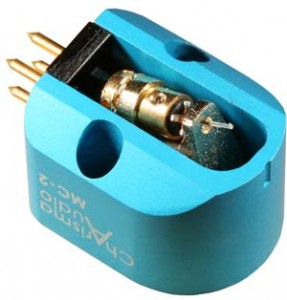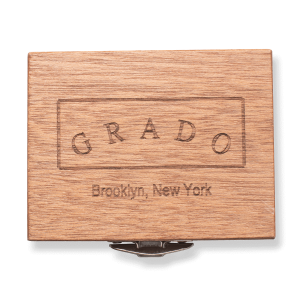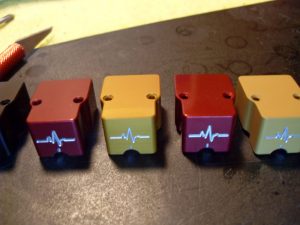Audio-Technica was founded in 1962 by Hideo Matsushita; the company's first offerings were the AT-1 and AT-3 phono cartridges. Over the years the company has branched into numerous facets of music reproduction, with products in both the home and commercial environment. For decades, Audio-Technica microphones have been chosen for their overall quality and performance, as have their headphones and mixing consoles. Yet Audio-Technica has never abandoned their roots, and woven throughout their history is an unwavering commitment to analog playback. The product line up from AT is a diverse one, from the amazingly affordable CN5625AL moving magnet cartridge, to high performance moving coils such as the OC 9 III, or even the iconic ART-9. It should be acknowledged that without companies such as Audio-Technica, those of us committed to playing vinyl would have been hard pressed to survive in the dark years before this current revival of analog had gained momentum. Fortunately, this analog institution has stayed the course, and continues to develop and refine their cartridge designs. Today’s analog hobbyists can choose from several remarkable Audio-Technica cartridges, all of which are offered at a very reasonable price given the level of performance they achieve. The Audio-Technica 33EV is one cartridge that continues to garner a lot of attention in the marketplace.
The Audio-Technica AT33EV is a low output moving coil with .3mv output voltage. This cartridge has a list price of $965, though a savvy shopper can find the 33EV for an attractive price when it goes on a promotional offering. This cartridge uses a proprietary dual moving coil architecture in conjunction with neodymium magnets that are precisely aligned to achieve a .5dB balance between both channels of the cartridge. The cantilever is a tapered pipe design formed with Duralumin, which reduces the stylus tip mass, and improves the transmission efficiency of the assembly. A .3 x .7 nude elliptical diamond is fitted to the low mass cantilever, which allows it to be quite responsive to the record groove. It is relatively unfussy in terms of alignment, which allows it to perform well with a wide array of turntables and tone arms. The coils are wound from PCOCC 6N copper, which is the highest grade of this wire available. The cartridge body is a combination of a cast aluminum structure that is combined with a resin material for the cover. These complementary materials were selected to provide an inert and stiff structure that would have a minimal influence on the sound of the cartridge. A double damper system is employed to control resonances, which has been used by Audio-Technica for many years in their cartridge designs. Hanenite is a proprietary dampening material used within the body and at the cantilever fulcrum point to minimize unwanted vibrations. Audio-Technica has packed an impressive amount of technology into this affordable cartridge, and this high degree of value has not gone unnoticed by audio hobbyists.
The AT 33EV does not have tapped bolt holes, yet it was still easy to install on my Pete Riggle 12" String Theory arm. I selected the Galibier Audio Serac turntable for this evaluation since it is representative of the type of table a prospective owner could have. The tracking force range for this cartridge is 1.8 to 2.2 grams, and I settled on 2 grams, which is the recommended setting. The phono stage used is a Liberty Audio B2B-1, configured for a 100 ohm load, as this provided the most even tonal balance in my system. An Electra Print PVA passive pre-amplfier and matching 300B Custom amplifier make up the heart of the system. Speakers are a pair of Hawthorne Audio Trio with hardwood baffles built by Woodsage Audio. An Audio Magic Mini-Reference power conditioner routes clean AC power to the system. All cables are from the ZU Audio Mission series of wire. The 33EV went through a 50 hour break in period, which was recommended by the staff at Audio-Technica USA.
I kept my music selections very casual during the break in phase, but even during these early encounters I could not help but notice how well the 33EV handled the spatial attributes of a recording. This cartridge is utterly outstanding with regards to how it places and defines performers and instruments. This attribute was undeniably apparent when I put on "Dreams" by Fleetwood Mac. [Rumours; Warner Bros Records BSK3010] Stevie Nicks is placed front and center as expected, and projected forward a significant distance ahead of the speakers. The background vocals from McVie and Buckingham are firmly anchored in the left and right hand corners of the sound stage, although a slick studio effect floats a short phrase across the back of the recording early on in the song. The bass guitar sounds massive. It is located just right of center, and is easily identified as being behind Nicks. The drum set anchors the sound stage, being firmly placed behind the lead singer. The drums and cymbals are kept together in a realistic manner rather than being splashed across the rear wall. I have heard many cartridges over the years that could not approach the AT33EV in terms of imaging abilities, in spite of them costing significantly more than this plucky cartridge. During my subsequent listening sessions, this ability to present a solid, stable, and well sorted out image is an attribute that consistently came to the fore front.
Another personality trait that manifests itself with the AT 33EV is how exuberant this cartridge is, with an unvarnished demeanor that taps into the raw and unfettered side of music. While this cartridge plays wonderfully with jazz and classical music, I find its true calling to be rock & roll or blues. Whether the early offerings of the genre from The Beatles or The Beach Boys, or more modern bands such as Pearl Jam and Nirvana, the AT 33EV just makes that emotional connection with these types of music that die-hard hobbyists search for. I spent one morning listening to "Who Are You" [Who Are You, MCA Records MCA-3050] by The Who, and I had an awesome jam session with this album and cartridge combination. The title track has been one of my favorite Who songs over the years, and the AT 33EV allowed me to experience it in a way that very few of my previous table and cartridge combinations ever have. Many of the high dollar moving coil cartridges are refined and detailed, but that polished presentation robs this piece of the essence that makes it a great rock and roll song. Everything from Roger Daltrey's growling vocals, to the Peter Townshend signature power chords were alive and in your face, just like a great rock and roll band should be. Keith Moon's drum work was spectacular, and the intensity of the cymbal crashes just grabbed me and held my attention. Now this is not the finest recording or pressing, but the 33EV still finds the attitude that is embedded in rock music where the young and rebellious youth tell the establishment to go screw themselves. It would not be a stretch to say that this cartridge carries the soul of an unrepentant rock and roller, and could match shots of whiskey and tequila with Iggy Pop and Sammy Hagar any time it wanted to. All right that might be taking a metaphor a bit too far, but you get the point!
As I alluded to, the AT33EV cartridge has its own distinctive personality. The truth is every cartridge has a unique set of characteristics, and each design will present music in a slightly different manner. The end result is defined by a combination of the designer's philosophy and skill, which must be tempered by the resources and materials available to meet a defined price point. One personality quirk that I noticed about this cartridge is that the upper midrange and lower treble regions have a slight degree of lift that provides a hint of sparkle to this region. This aberration affects both male and female vocals, but due to the range that most female artists operate in, it is easier to hear on their works. This is readily apparent on Laurie Anderson's Mister Heartbreak album, as the vocals on all the songs are clearly highlighted and moved slightly forward with this cartridge. The effect is pleasant in most cases, but it really is a deviation from a balanced tonal perspective. I was listening to "Kokoku" [Mister Heartbreak; Warner Brothers Records 25077-1], and Anderson's voice was just ethereal in its presence, and in some ways it was larger than life. My reference cartridge is a ZYX 4D, and that cartridge is more understated and balanced with the vocals in this song. The comparison shows the tonal liberties that the 33EV is taking, although it is an eminently enjoyable diversion at that. The same affect can be heard on the following song "Excellent Birds" which is a duet with Peter Gabriel. His vocals also became a shade lighter, although the effect was less noticeable due to the deep and resonant character of his voice. The AT 33EV is not a ruler flat design, and frankly one should expect a bit of personality to a cartridge that is as affordable as this one is. What is remarkable is not only how strong its positive attributes are, but that its limitations are so neatly integrated into the design that they are not objectionable.
The Audio-Technica 33EV has a reputation of being a dark cartridge, and this description has to do with the manner in which it handles information in the upper registers. The primary limitation of this cartridge is indeed the top end, as it just does not resolve the finer shadings and nuances in the treble that the top tier moving coils are capable of rendering. This may be a function of the elliptical stylus and the alloy cantilever, but that is only my personal hunch. What I do know is on "Colors/Dance" [Autumn; Windham Hill Records WH-1012] from George Winston, the piano notes have a slightly truncated decay pattern. Now the lower registers sound wonderful, I can hear the hammer strikes, and the effects of the pedal work quite easily. Even the decay pattern of the lower registers sound natural, but as the music progresses up the scale it became slightly threadbare in terms of harmonic texture. When listening to the same song with the ZYX 4D on the table, the music takes on a light and airy feel that the 33EV just does not quite match. Now this is not a deal breaker with this cartridge, as I think it is a superb value at its price point. When you combine this attribute with the slightly accentuated midrange area, it tends to exaggerate the loss of high frequency information, and that is what leads to this idea that the 33EV has a dark presentation. Although if you take the time to listen closely, you will find this first impression is somewhat overstated. For the 33EV is quite respectable in regards to its ability to present high frequency information.
One question I ask myself during a review is, "What's the fun factor?" With the AT 33EV that is a very easy question to answer, because this cartridge is just a blast to listen to. One evening I pulled out a 45 RPM extended remix of "Relax" by Frankie Goes to Hollywood. [Relax; Island Records 0-96975] Sure, this is not complicated music, but when the AT 33EV is thrown into the mix, the sound that just expands and fills the room, and pummels you with massive dynamic swings. The bass line is visceral, with a solid impact that many affordable cartridges are unable to match. The synthesizer notes just hang and shimmer over that bass line. Everything about this cartridge is fun, and that is just fine with me. Audio gear is supposed to allow our music to be enjoyable and be something that brings us a pleasurable distraction from the realities of day to day life. The Audio-Technica 33EV does this very well, and easily passes the fun test.
The vinyl revival our hobby has been experiencing has been underway for several years now, but in order for it to thrive, there needs to be a reliable source for high quality cartridges that are reasonably priced. There really are only two major cartridge manufacturers that can provide an array of cartridges that span from entry level to high performance offerings. Audio-Technica has been working in this field since the 1960s, and there is little doubt that they know a thing or two about building quality products. One interesting tidbit about the AT 33EV cartridge is its descent from the 33ANV, which was a specialty model designed to celebrate the 45th anniversary of the company. The 33EV is built upon the architecture of the anniversary version, and contains advancements in design while keeping the price affordable. There is a lot of technology packed into this cartridge. From the tapered Duralumin cantilever, to the PCOCC 6N copper coils, the Neodymium magnets, and the composite aluminum and resin cartridge body, the build sheet for this cartridge is quite impressive. Now all the technology in the world does not mean a thing if the corresponding sound quality is not realized. In the case of the AT 33EV this is not an issue, and the hobbyist gets an excellent performance to price ratio with this cartridge. The AT cartridge has remarkable imaging abilities, and the 33EV has a dynamic and engaging personality. The way in which it presents vocals is intoxicating, even though it takes a few liberties in terms of ultimate tonal accuracy. For those hobbyists looking for a quality moving coil cartridge under the $1000 price point, the Audio-Technica 33EV is one they should seek out and listen to. There is a lot to appreciate with this cartridge, especially if you require your music to have a forceful and unrestrained presentation that brings music alive. John Hoffman
AT 33EV cartridge
Retail: $965
Audio-Technica
http://www.audio-technica.com




